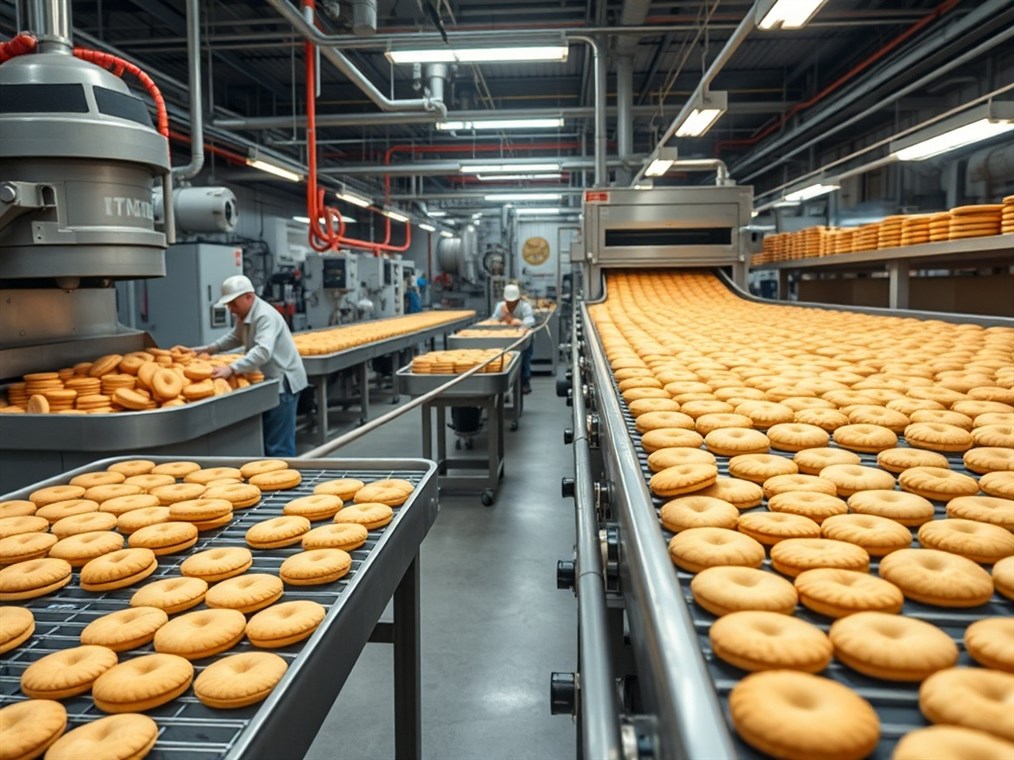What Really Goes on Inside a Biscuit Factory? A Deliciously Detailed Look
Ever wondered how those perfectly uniform biscuits end up on supermarket shelves? It all starts in a biscuit factory – a place where doughy dreams come to life on a massive scale. These aren’t your grandma’s kitchens; we’re talking about specialized facilities humming with machinery, all dedicated to churning out biscuits by the thousands.
Biscuits have been around for ages. Think way back – ancient civilizations! They were basically the original travel snack, designed to last on long journeys. The word “biscuit” itself hints at this: it comes from the Latin “panis biscoctus,” meaning “twice-baked bread.” Clever, right?
But the real biscuit boom happened during the Industrial Revolution in Britain. Suddenly, small family bakeries like McVitie’s and Carr’s exploded. They became these incredible, cutting-edge operations. Imagine Huntley & Palmers setting up the first dedicated biscuit factory in 1846! These guys were the pioneers, constantly inventing new equipment, packaging, and recipes. Honestly, they’re the reason we have such a crazy variety of biscuits today.
So, what actually happens inside one of these factories? Let’s take a peek behind the scenes:
First, it all starts with the ingredients. Flour, sugar, fats – all the good stuff. These are measured with laser-like precision. You can’t just eyeball it when you’re making thousands of biscuits!
Next up: the mixing. Giant, automated mixers combine everything into a uniform dough. The timing and temperature are super important here. Get it wrong, and you’ll end up with a biscuit disaster! Some factories even use these fancy automated systems that dispense ingredients and mix everything continuously. It’s all about minimizing human error and maximizing output.
Then comes the fun part: shaping! The dough gets rolled out into sheets and cut into all sorts of shapes. Think molds, rotary cutters, those sorts of things. Did you know that wafer biscuits are made by pouring a thin batter onto hot wafer irons? It’s like a giant, biscuit-making waffle iron!
After shaping, it’s into the oven they go. These aren’t your home ovens, mind you. We’re talking massive conveyor belt ovens that bake the biscuits at just the right temperature for just the right amount of time. The goal? Perfectly crisp biscuits, every single time.
Once they’re baked, the biscuits need to cool down. They travel along conveyor belts, getting blasted with cool air. This prevents them from getting soggy or losing their shape.
Finally, it’s packaging time! Automated machines wrap the biscuits up to keep them fresh. And these days, there’s a big push for sustainable packaging – biodegradable materials, recyclable wrappers, the works. It’s all about being kind to the planet while keeping your biscuits delicious.
Modern biscuit factories are seriously high-tech. Think automated dough mixing, multi-function sheeting and cutting machines, and robotic packaging systems. Some factories are even becoming “smart factories,” using the Internet of Things to track everything in real-time. It’s like a biscuit-making symphony, all perfectly orchestrated by computers.
Of course, hygiene and safety are a huge deal. These factories have super strict cleaning protocols. Regular cleaning, pest control, employee hygiene – they take it all very seriously. They also have to be careful about allergens, making sure everything is clearly labeled.
And speaking of the future, biscuit factories are getting greener all the time. They’re using energy-efficient ovens, sustainable packaging, and closed-loop water systems. They’re also trying to source ingredients locally and reduce waste wherever they can.
So, what’s next for the biscuit industry? Well, expect to see even more technology, a bigger focus on sustainability, and maybe even personalized biscuits! Imagine biscuits tailored to your specific nutritional needs. The possibilities are endless!
Ultimately, a biscuit factory is a fascinating blend of tradition and innovation. It’s where time-tested recipes meet cutting-edge technology to create the biscuits we all know and love. And as the world changes, these factories will continue to adapt, ensuring that we always have a delicious biscuit to enjoy with our tea (or coffee!).

